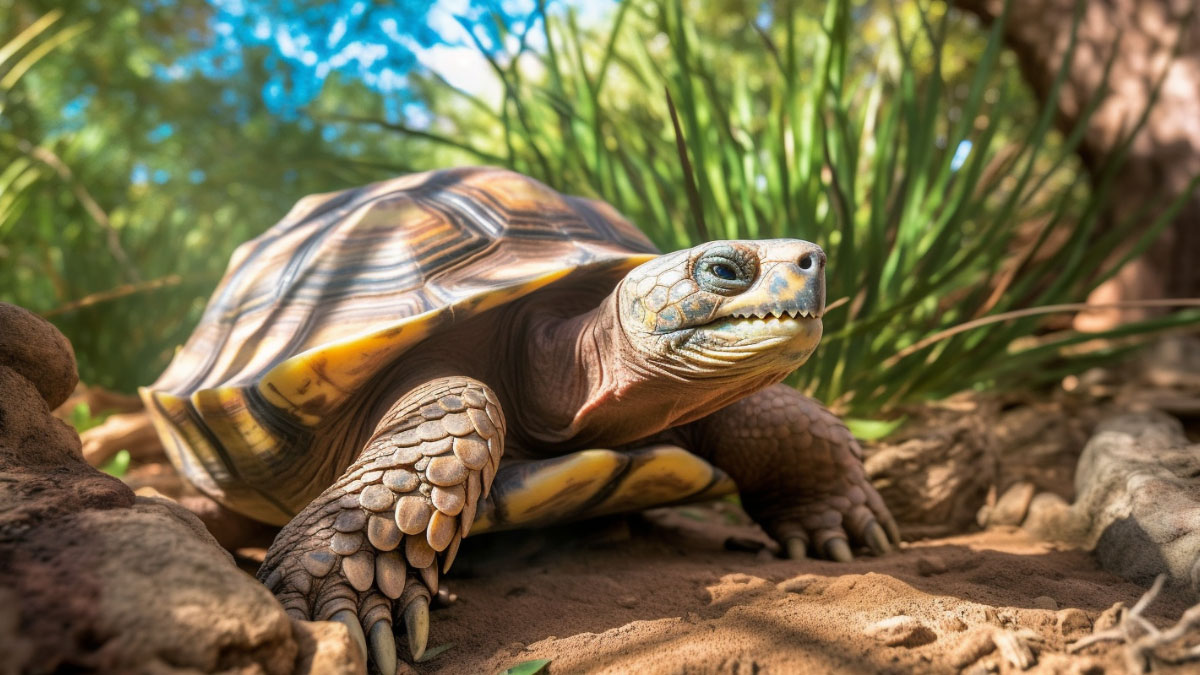Tortoise Without Shell: Will It Survive? How It Looks?
Tortoises are fascinating creatures that have been around for millions of years. The shell of a tortoise is one of its most distinguishing features, as it provides both protection and support.
Have you ever wondered what would happen to a tortoise without shell? Will it survive? How it looks? Well, the short answer is no; it won’t survive. The shell is essential to the tortoise’s body, as it protects against predators and supports the animal’s organs. Without its shell, a tortoise could not regulate its body temperature or support its weight.
This article will explore the importance of the tortoise’s shell and how it affects the animal’s survival and reproduction. We will examine the structure and function of the shell, among other related topics. Keep reading.
Anatomy Of A Tortoise Shell
Contents
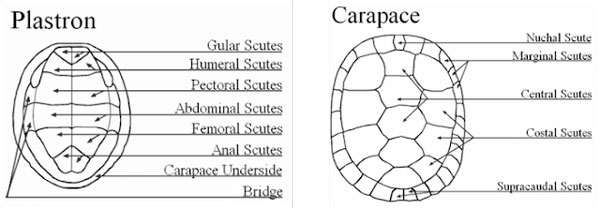
Before we answer the question, “Can tortoises live without their shells” let us first understand the shell’s anatomy.
- Bony structures and specialized tissues connect a tortoise’s shell to its body.
- These structures and tissues allow the tortoise to move its limbs, neck, and head inside the shell while providing support and protection.
- The shell’s carapace, or upper part, is attached to the tortoise’s vertebrae and ribs.
- The carapace’s bony plates are fused to these bones, forming a rigid structure that covers the tortoise’s back. The fusion of these bones to the carapace is so complete that they cannot move independently of the shell.
- Similarly, the plastron, or lower part of the shell, is attached to the tortoise’s bones via a specialized tissue called the bridge. The bridge is a cartilaginous structure that connects the plastron to the pectoral and pelvic girdles.
- This connection allows the tortoise to retract its limbs and head inside the shell for protection. Also, the muscles that move the legs, for example, are attached to the bones of the leg, which are then attached to the shell.
- As the muscles contract and relax, they move the legs and shell together, allowing the tortoise to walk, climb, and dig.
Can Tortoises Live Without Their Shells? Will They Survive?
As mentioned above, tortoises cannot live without their shells. A tortoise’s shell is integral to its anatomy and serves many essential functions, including protection, support, and insulation. Let us discuss the importance of the tortoise’s shell in depth.
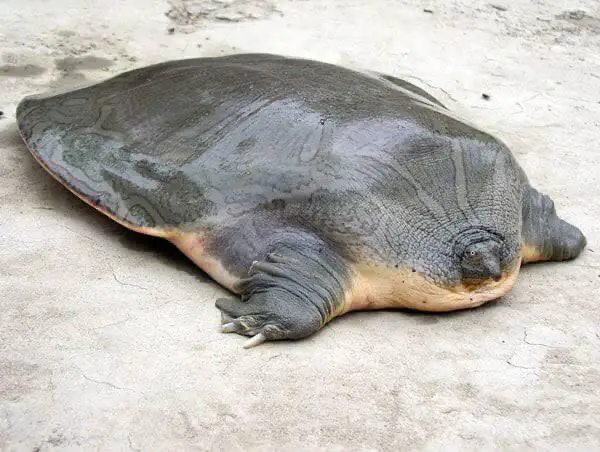
Protection
The tortoise’s shell serves as its primary defense against predators. It creates a tough, long-lasting barrier that can withstand bird, mammalian, and reptile attacks. The hard exterior of the shell is designed to absorb blows, while the inner layer of bone supports and cushions the tortoise’s body.
Support
The shell also protects the tortoise’s internal organs, such as the lungs, heart, and digestive system. Its shape is perfectly adapted to the tortoise’s body, providing a natural and comfortable fit.
Temperature regulation
The coloration of the shell absorbs and reflects heat, allowing the tortoise to maintain a comfortable body temperature. Furthermore, the tortoise’s shell’s shape and size provide insulation, allowing it to retain heat on cool days and release heat on hot days.
Locomotion
The tortoise’s limbs are attached to the underside of the shell, and the spine and ribs are fused to the shell. And the shell’s shape and size dictate the tortoise’s movement patterns and enable it to move efficiently and effectively.
However, note that the shell is not indestructible, and damage to the shell can be life-threatening to a tortoise. Thus, they cannot survive without the shell. Likewise, a cracked or broken shell can lead to infection, dehydration, and other health problems. We will talk about this later in the article.
Can Tortoises Get Out Of Their Shells?
Contrary to popular belief, tortoises cannot completely get out of their shells. The shell is fused to the tortoise’s body and is a permanent part of its anatomy. The shell comprises several layers, including the outer keratin layer, the middle bone layer, and the inner layer of organs and tissues.
The shell grows with the tortoise and cannot be shed or removed like a suit of armor. On the other hand, tortoises can retract their limbs and head into their shells for protection.
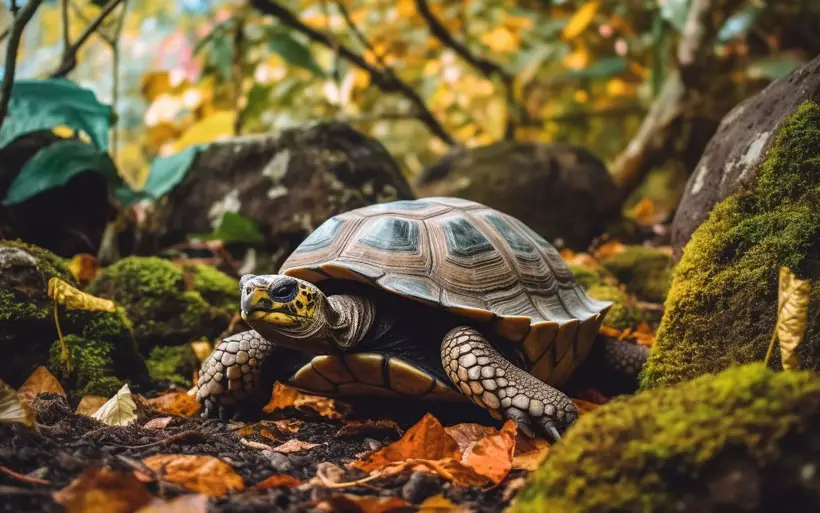
This natural defense mechanism enables the tortoise to flee potential danger. When threatened, the tortoise will draw its head and limbs into its shell, closing the gap with a flap of skin known as the plastron.
As a result, never try to force a tortoise out of its shell. This will cause the animal great pain and, eventually, death. Consider how much distress you would feel if someone tried to remove your spine or peel the skin off your back.
Can Tortoises Regrow Their Shells?
Tortoises cannot regrow their shells after they have been damaged or removed.
Unlike other reptiles, such as lizards, which can regenerate lost body parts, a tortoise’s shell is a complex and highly specialized structure fused to the animal’s bones. As a result, any damage to the shell is likely to cause permanent harm to the tortoise.
The growth and development of a tortoise’s shell are inextricably linked to its overall growth and development. The shell comprises bony plates called scutes covered in keratin, the same protein that makes up human hair and nails.
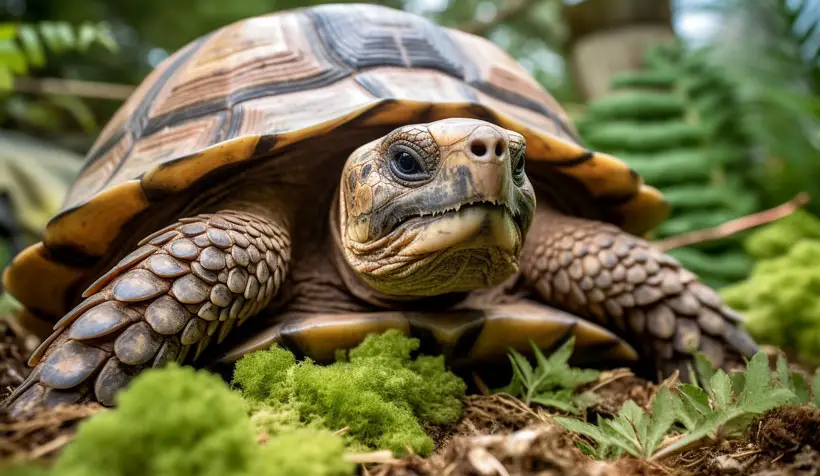
These scutes grow with the tortoise but are not shed or regrown like hair or nails. If a tortoise’s shell is damaged, the animal may attempt to repair the damage by growing additional keratin to cover the exposed area.
However, this keratin growth is not the same as shell regrowth. This is because it does not restore the shell’s structural integrity or protect the tortoise like a healthy shell.
Can A Tortoise Survive A Cracked Shell? Will The Shell Heal By Itself?
If a tortoise’s shell becomes cracked or damaged, it can be life-threatening for the animal. Whether or not a tortoise can survive a cracked shell depends on the damage’s severity and the treatment’s effectiveness.
Accordinlgy, if the crack in the shell is small and superficial, the tortoise may be able to survive without medical intervention. In this case, the tortoise’s body may repair the damage by producing more keratin to cover the exposed area. However, this is a slow process that could take months to complete.
If the crack is severe enough to expose the tortoise’s underlying bones or organs, the tortoise will require immediate medical attention to survive. An open wound will lead to bacteria and parasites entering the animal’s body, increasing the risk of infection.
The vet will use epoxy, plastic, or wire brackets to repair minor cracks in the shell. Larger cracks may necessitate surgery and specially developed fiberglass to replace any missing shell pieces in the tortoise. Here is a video showing how to repair cracked tortoise shells.
The length of time it takes for the tortoise to heal depends on the severity of the wound, but full recovery usually takes 6-12 months.
It is important to ensure the tortoise gets well-fed during recovery time and avoids spending too much time in the water. Water may lead to algae formation in the wounded area.
What Does A Tortoise Look Like Without A Shell?
As we have already established, tortoises cannot live without their shells. So, luckily you will never have to see a tortoise without its shell. However, an ancient turtle known as Odontochelys semitestacea is the closest thing to a shell-less tortoise.
Odontochelys semitestacea lived approximately 220 million years ago during the Late Triassic period and is believed to be the oldest known turtle species.
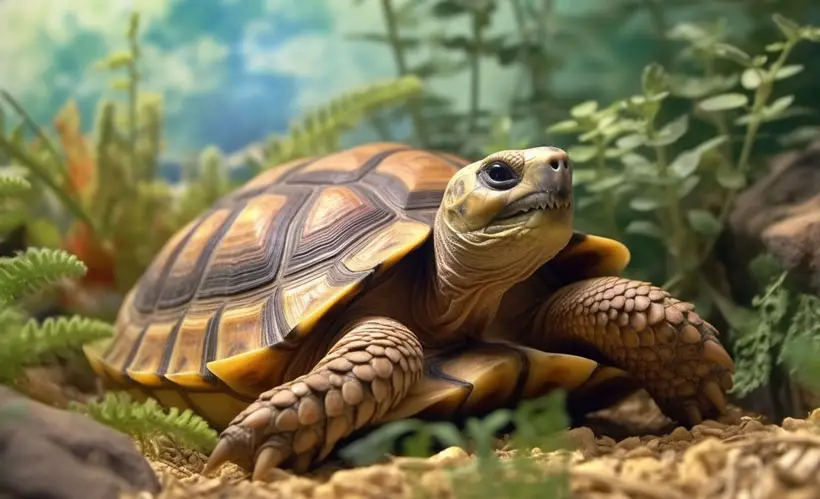
Unlike modern turtles and tortoises with fully-formed shells, Odontochelys had a partial shell consisting of a plastron (lower shell) but lacked a complete carapace (upper shell). Instead, it had a series of broadened ribs that offered some protection to its back.
In addition to its partial shell, Odontochelys had other anatomical features that provide clues to the evolution of the turtle’s shell. For example, it had a broadened and flattened ribcage that likely supported the partial shell.
It also had a toothed lower jaw, a characteristic shared with other reptiles but not modern turtles/tortoises. Studying ancient species such as Odontochelys semitestacea provides valuable insight into the evolution of the turtle’s shell and its development.
FAQs
Here are other related questions to explore.
Yes, baby turtles are born with shells. The shell develops in the egg before the turtle hatches. This shell is formed from the fusion of bones and other structures in the turtle’s body, providing essential protection for the developing embryo.
Yes, tortoises feel sensations on their shells because they have nerves on the shell connecting to their nervous system. This enables them to detect sensations such as being touched, scratched, stroked, or tapped on their shell.
No, tortoises cannot shed their shells. A tortoise’s shell is part of its body and grows with the tortoise throughout its life. The shell’s scutes keep growing and overlapping on top of each other.
Conclusion
The shell is essential to a tortoise’s anatomy, protecting vital organs and supporting the body. A tortoise cannot survive without its shell, so it is critical to seek medical attention from a veterinarian if it has a broken shell as soon as possible.
Although a tortoise cannot live without its shell, studying ancient species such as Odontochelys semitestacea provides valuable insight and the development of this unique anatomical feature. Furthermore, this knowledge can inform our conservation efforts as we work to protect these fascinating creatures for future generations to enjoy.

